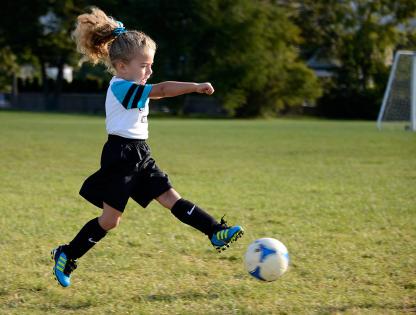Earlier in the week, Matt Windsor wrote about the importance of prevention before cure in terms of sporting injuries, specifically the football codes. We also spoke with the Podiatrist with the Sydney Swans, Dr Michael Kinchington of the Australian Podiatry Association about foot injury. Dr Kinchington has spent 20 years with elite football teams and completed a PhD studying the lower limbs.
“Lower limb injury accounts for 70 -80% of all injuries sustained playing professional football. While some of this is contact injury and unavoidable, the majority of injury to the feet and legs is due to running technique, overuse, the type of ground surface the football codes are played on and football boots."
He indicated that the same risk factors apply for the amateur footballer and children.
“The football codes are multi-directional, ballistic sports. The foot and lower limb accept huge loads in excess of three times body weight with running, jumping, side-stepping and kicking a football.
“Correct training techniques are very important and my experience with professional players is that preparation and attention to detail is vital to prevent injury. For example, Professional footballers will have different shoes and football boots for different weather and grass conditions."
While this isn't feasible for the young player, or the mum-or-dad amateur player, it's nonetheless important to get advice about the correct boot to help avoid injury.
"Stretching and proper warm up sessions before training or games are also advisable,” he said.
“There are 28 bones in one foot, held together by a complex network of ligaments and muscles. The foot needs to be encased in a supportive boot which also allows foot flexibility when running and moving in different directions, as required in football. However all feet and lower limbs are shaped and move differently, so knowing foot type, gait and running style are vital in helping to select the best boots and training shoes.
“If children are playing football it is important parents also take their kids feet and limbs seriously by having them checked by a podiatrist, who can then recommend a football boot and running shoe suited to the needs of the child.
“Don’t be seduced by the marketing and hype of advertising. Many of the boots are for top-end players and not suited to kids and the amateur footballer. Get the correct footwear advice and recommendations on the correct place to go and buy footwear - where feet are properly measured and fitted in line with the podiatrist’s recommendations,” Dr Kinchington said.
Common foot and limb pathology in football are Achilles tendon and calf muscles injuries; stress fractures in the feet and shins, growth plate injuries of the heel bone in children, soft tissue strains like plantar fasciitis – the major structure in the underside of the foot; and lateral ankle sprains (rolling on your ankle) which can put you off the field for up to eight weeks.
Dr Kinchington said key ways to avoid such injuries are:
- focused muscle strengthening exercises; correctly fitted boots and trainers when off the field
- orthotics to stabilise the feet of players with biomechanical issues
- power taping to support and guard muscle performance during the game and help stabilise lower limbs, and
- proper warming up before playing or training and regular stretching of the limbs and feet.
“Remember, do not play with pain, use ice to reduce post-game soreness but if pain in feet or limbs persist see a podiatrist,” Dr Kinchington concluded.



















__small.png)










